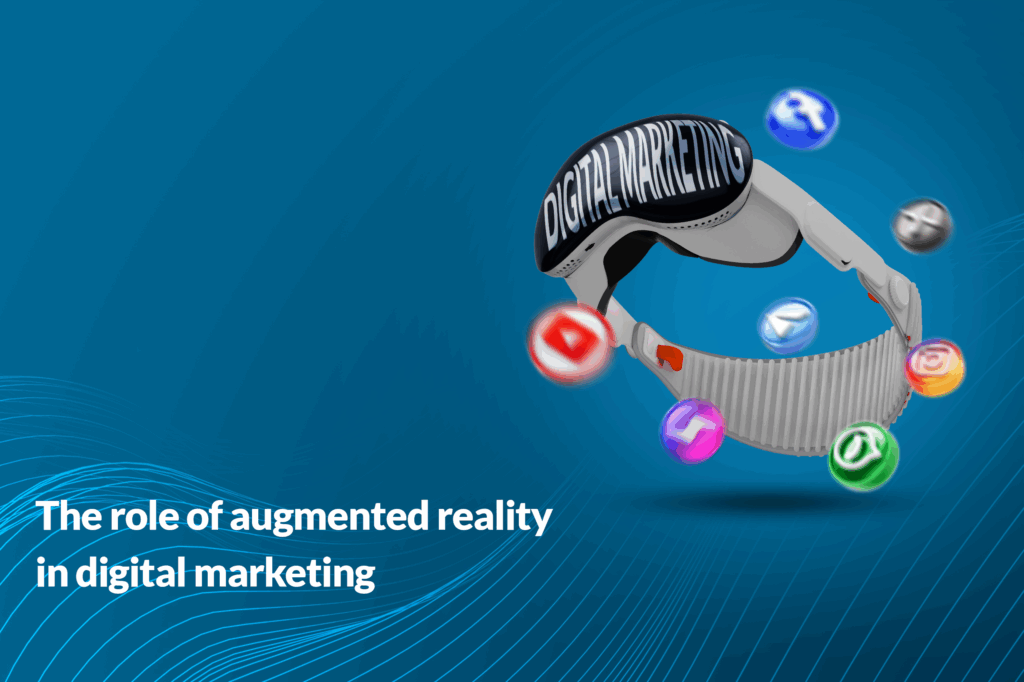The Importance of Modern Technologies in Digital Marketing
The world of digital marketing is changing every day. New tools and technologies are entering the market rapidly. Modern customers are more interested in interactive and engaging experiences. They expect brands to connect with them in a different and innovative way.
Augmented Reality in digital marketing and Virtual Reality in digital marketing are among the most important technologies that make this possible. These technologies make the shopping experience and brand interaction more personal and realistic.
Having a good product or high-quality service is still important. But it is only one part of success. Brands need to tell their story in a modern and appealing way. Using these technologies is one of the best ways to create such an experience.
According to global statistics, 37% of companies currently use virtual reality. Another 39% use augmented reality. These numbers are still less than half of the market. However, the trend shows that adoption of these technologies is growing fast. Many brands are already investing in this field.
What is Augmented Reality?
Augmented Reality (AR) means adding digital elements to the real world. These elements can be images, sounds, animations, or even text information. The user remains in the real environment. But through the camera of a smartphone or tablet, digital layers are displayed on the real image.
For example, a furniture store can provide an application that lets customers see their chosen sofa in their living room. The customer only needs to open the camera on their phone. The software displays the sofa in 3D and in the exact real space of the home. This experience helps customers make easier purchase decisions.
Advantages of Augmented Reality in Digital Marketing
-
Create an interactive shopping experience without physical presence.
-
Reduce errors in product selection.
-
Increase brand appeal by showcasing products creatively.
-
Can be used on simple devices like smartphones.
Applications of Augmented Reality in Digital Marketing
-
Education – Display complex concepts with clear 3D models. Example: Showing planets in space for science learning.
-
Entertainment – Combine the real environment with digital characters. Example: Mobile games that display characters on a street or in the user’s room.
-
Advertising – Display products in 3D inside the customer’s home or office.
-
Online retail – Try on clothes, glasses, or cosmetics virtually before purchase.
What is Virtual Reality?
Virtual Reality (VR) creates a completely digital environment. In this environment, the user is separated from the real world and enters a simulated world. Using VR usually requires a VR headset and controllers.
This immersive experience captures the user’s full attention. The user can move freely in the environment and interact with virtual objects.
Advantages of Virtual Reality in Digital Marketing
-
Create a complete and realistic shopping experience before purchase.
-
Keep the brand longer in the customer’s memory.
-
Display environments or products that are inaccessible in the real world.
-
Collect accurate data about customer behavior.
Applications of Virtual Reality in Digital Marketing
-
Interactive brand experiences – Customers can test products virtually before buying.
-
Brand awareness – A unique experience draws attention and makes the brand memorable. Example: Volvo’s virtual car test drives.
-
Simplifying the buying process – Customers can try clothes, cosmetics, or digital devices before purchase.
-
Virtual tourism – Travel agencies can present destinations virtually before the trip.
-
Customer behavior analysis – Interaction data from VR environments can improve marketing strategies.
Differences Between Augmented Reality and Virtual Reality in Digital Marketing
-
Environment: Virtual reality creates a fully digital space. Augmented reality combines the real world with digital elements.
-
Required tools: VR needs a headset and controllers. AR runs on a smartphone or tablet.
-
Experience type: VR provides a fully immersive experience. AR enhances the real-world experience.
The Future of These Technologies in Marketing
In the coming years, the line between augmented reality and virtual reality will become less clear. Brands will aim to combine the two technologies to create more complex and engaging experiences. The use of these technologies will not be limited to large brands. Even small businesses can benefit from them with creativity.
Digital marketing is moving toward more personalization. Customers expect a shopping experience that matches their needs and preferences. Augmented Reality in digital marketing and Virtual Reality in digital marketing are powerful tools that make this possible.
They can help brands create memorable interactions. They can also give customers the confidence to make purchase decisions. Brands that adopt these tools early will have a stronger position in the competitive market.


